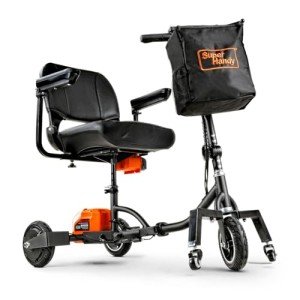15 Mobility Devices Benefits Everybody Should Be Able To
Understanding Mobility Devices: Enhancing Independence and Quality of Life
In today's busy world, the desire for mobility is universal. Nevertheless, certain medical conditions or age-related challenges can prevent movement, leading to a continuous look for help. Mobility devices work as vital tools to enhance self-reliance, enhance lifestyle, and allow individuals to engage fully in their communities. This article supplies a detailed overview of mobility devices, including their types, functions, choice requirements, and more.
Kinds Of Mobility Devices
Mobility devices vary from easy aids to complex devices, customized to meet various requirements. Below is a table summarizing common types of mobility devices:
Type of Device
Description
Suitable For
Walkers
Four-legged support devices that offer remarkable stability while walking.
Individuals needing additional assistance.
Canes
Single or three-legged sticks that improve balance and support walking.
Those with minor mobility difficulties.
Wheelchairs
Seats installed on wheels, offered in handbook and electric variations.
Individuals with minimal or no mobility.
Scooters
Electric cars created for outdoor usage and ease of navigation.
Those who can't walk fars away.
Crutches
Devices that help individuals transfer weight far from an injured leg.
Individuals recovering from leg injuries.
Rollators
Walkers with wheels, seats, and brakes for improved mobility.
Users needing rest choices while strolling.
Raise Chairs
Reclining chairs that assist users in standing and sitting down.
Seniors or those with mobility constraints.
Mobility Scooters
Small electric automobiles for restricted mobility, often utilized outdoors.
People needing assistance over cross countries.
Key Features of Mobility Devices
When picking a mobility gadget, a number of key functions need to be thought about to ensure ideal performance and ease of use:
- Weight Capacity: Understanding the device's weight constraint is essential for security and efficiency.
- Adjustability: Devices must be adjustable in height and width to fit the user comfortably.
- Portability: Lightweight and foldable alternatives are important for users who travel or require transport.
- Stability and Safety: Look for functions like anti-tip wheels and tough structures to enhance safety.
- Reduce of Use: Simple mechanisms and easy to use designs can make a considerable difference in day-to-day use.
- Comfort: Ergonomic designs and cushioned seats can enhance the user experience.
Choosing the Right Mobility Device
Choosing the best mobility device can be a challenging task. Here are some steps to assist the decision-making process:
- Assess Needs: Evaluate the person's mobility obstacles and daily activities.
- Seek advice from a Professional: Engage healthcare experts who can provide recommendations based upon the person's physical condition.
- Trial Options: If possible, trial different devices to identify comfort and functionality.
- Evaluation Budget: Consider the expense of the gadget, including any extra features or modifications needed.
- Research study Options: Determine the best brands and designs by reading reviews and contrasts.
Table: Comparative Analysis of Popular Mobility Devices
Gadget
Advantages
Downsides
Walkers
Outstanding stability, promotes walking.
Large, may limit motion in small areas.
Canes
Lightweight, enhances balance.
May not supply sufficient assistance for severe mobility concerns.
Wheelchairs
Perfect for those with considerable mobility limitations.
Can be troublesome, specifically in indoor environments.
Scooters
Great for outdoor use, simple to maneuver.
Limited indoor functionality, much heavier.
Rollators
Supplies rest alternative, simple to move.
May require more area than conventional walkers.
Lift Chairs
Comfortable, helps transition from sitting to standing.
More costly, larger footprint.
Frequently Asked Questions (FAQs)
1. What is azaan.top ?
A mobility gadget is any tool developed to help individuals in moving and browsing their environment. This includes walkers, wheelchairs, scooters, and crutches.
2. How do I understand which mobility gadget is best for me?
Consider your particular mobility challenges, physical capabilities, and lifestyle needs. Consulting with healthcare specialists can likewise provide customized recommendations.
3. Are mobility devices covered by insurance?
Many insurance plans, consisting of Medicare, may cover specific mobility devices. It's essential to contact your insurance coverage supplier for particular coverage details.
4. Can I rent a mobility device instead of purchasing one?
Yes, lots of medical supply stores and drug stores use rentals for mobility devices. This alternative is useful for individuals with temporary mobility concerns.
5. How can I maintain my mobility device?
Routine upkeep is vital. It includes cleaning the device, looking for wear and tear, and ensuring all parts are working properly.
The Impact of Mobility Devices on Quality of Life
Mobility devices considerably enhance the lifestyle for individuals with limited mobility. They promote self-reliance, motivate social interaction, and boost access to essential services and leisure activities.
- Increased Independence: Users can browse their communities, go to events, and engage in hobbies without relying on others.
- Social Engagement: Mobility devices assist in involvement in celebrations, consequently combating feelings of seclusion.
- Improved Safety: Devices offer stability and reduce the danger of falls, promoting user self-confidence.
Mobility devices are more than just tools for movement; they are gateways to self-reliance and quality living. By comprehending the different kinds of mobility aids offered, their key features, and factors to consider for picking the ideal gadget, individuals can make informed decisions about their mobility requires. Ultimately, the ideal mobility gadget can cause a more active, fulfilling life. Whether it's a walker, wheelchair, or scooter, the right option contributes considerably to improving the mobility and self-reliance of users.
